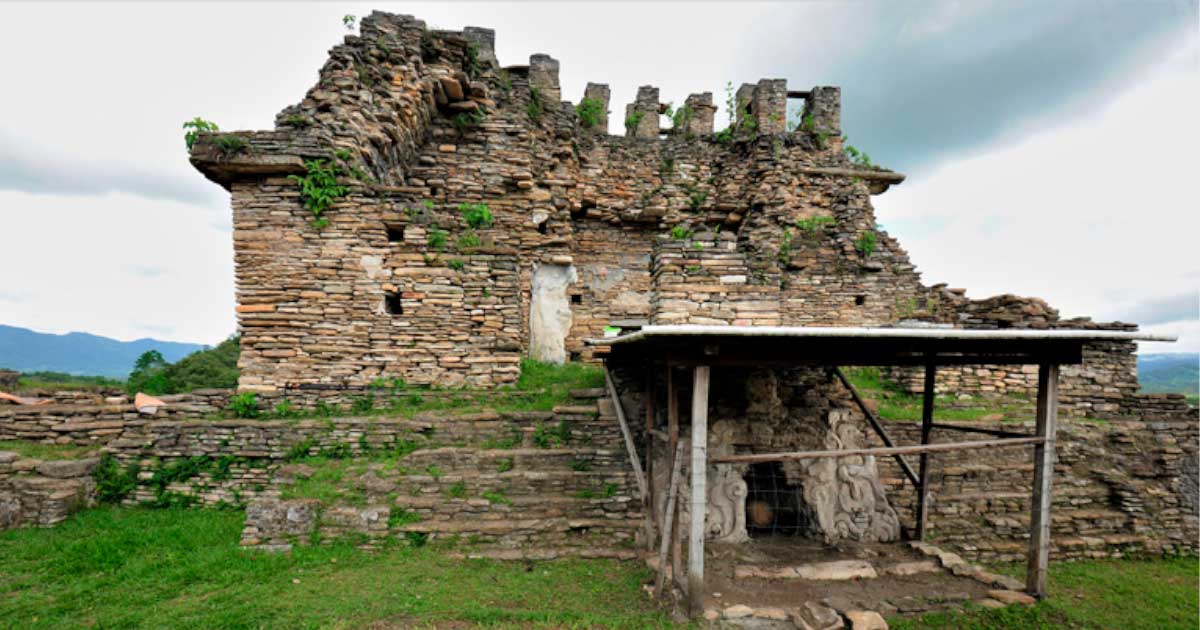Mesoamerican Ball Game Rubber Balls Were Made With Human Ashes
Archaeologists in Mexico have discussed the ritual significance of the Maya “Cave of Death”. It contained ingredients of rubber sporting balls laced with human ashes.
The pre-Columbian Maya city of Po’p (Tonina), meaning “house of stone” in the Tzeltal language, is located in what is now the Mexican state of Chiapas, about 8 miles (13 km) east of the town of Ocosingo. Featuring the tallest structures in the Maya world, reaching 74 meters (241 ft), the lost pyramids of Tonina rise high above the jungles of southeastern Mexico.
In 2020, buried eight meters beneath the site's most important pyramid, archaeologists found a 7th or 8th century chamber/crypt. A small hole beneath a stone led the researchers to a series of small vaults connected by stairways and steps. An antechamber and a crypt about eight meters beneath the pyramid contained around 400 ancient jars with human ashes - blended with rubber and roots.
- Danger on the Court: The Deadly Ancient Mesoamerican Ball Game
- 3,000-Year-Old Ball Game Where Winners Lost Their Heads Is Revived in Mexico

Stone lid was found in 2020 and when removed revealed led to the stacked crypt. (Mauricio Marat / INAH)
At Tonina Sun Temple, Bodies Were Made Into Sporting Balls!
While the nature of this recent discovery is deeply-sacred, Po’p was strategically located at the western fringe of the Maya region overlooking one end of the Ocosingo Valley. Oriented on a northeast-southwest this was a major Maya population center and fierce enemy of Palenque during the Classic Period (400-900 AD).

Stone lid of 90 by 60 cm in situ covering the entrance to the subterranean crypt of the temple, with the representation of a bound captive. (Mauricio Marat. INAH)
You might be forgiven for thinking that the rubber mixed with the human ashes was taken directly from a rubber tree. Indeed the Aztec, Olmec, and Maya of Mesoamerica all made rubber using the natural milky, sap-like fluid found in some plants, ‘latex.’ But at this Maya site, in the death chamber, it is believed that the cremated remains “were used to make rubber balls, used in the Ball Game ritual.”
- The Ancient Rubber People of Mesoamerica
- 1300-Year-Old Severed Head Sculpture Located in the ‘Lost City’ of Maya

Detail of the Ball Court of the Archaeological Zone of Toniná, Chiapas. (Mauricio Marat / INAH)
Maya Life Was All About Death
According to the INAH this royal site held the body of the “Lady from Toniná,” and the site is renowned for extravagant religious paraphernalia. In this instance, a microscopic analysis of the organic matter contained within sporting balls revealed that “specialized people, possibly priests, undertook the combustion of the inert bodies of high-ranking personalities.”
The sulphur from the human ashes was used for the “vulcanization of rubber” in the balls made for the “Ball Game Court.” The archaeologists wrote that the ball game court was “a symbolic space of the ecliptic path of the sky, where they travel and the stars face each other, a space of war and death, of spectacle and power”. Yadeun added that with important cultural figures' remains being incorporated into balls, then used in sport, it represented "a transformation” of the body that allowed them to symbolically live on after death.

Eastern sector of the solar temple of Toniná. (Mauricio Marat / INAH)
Humans And Corn Alike
Dr. Yadeun said the remains of three rulers: Wak Chan Káhk´ (died 775 AD); Aj Kololte', (died 776 AD) and Lady Káwiil Kaan (died 722 AD) were all taken to the crypt “260 days after they had died.” The 260-day count was the “Tzolkin,” or “Tzolkʼin” and represented one of the most important cycles of the Maya ritual calendar.
This 260-day cycle came from the agricultural cycle of corn, as there are roughly 260 days between harvest and sowing. In sync with the corn cycle, a death ritual was “fulfilled in the 'cave of death'”. The ruler's remains were also taken to the cave on their annual death-dates, “for their transmutation,” said the team of researchers.
In conclusion INAH said that it is “sobering to find out that the Maya wanted the body of their rulers to become a living force, something that stimulated their people.”
Blood and death served very important purposes in Maya culture and the former was believed to contain a “life-force” or “chu 'lel” that was associated with supernatural forces.
Top image: The Temple of the Sun at Tonina Archaeological site, Chiapas. (Mauricio Marat / INAH) Entrance to the newly discovered crypt Temple of the Sun of Toniná, where the bodies of their rulers were cremated. Source: Mauricio Marat / INAH
By Ashley Cowie




















Comments
What the hell does any of this have to do with Mesopotamia?
It wouldn’t be too crazy for a culture to have a custom of taking some skin off dear old dead dad and making something to remember him by. Then it comes down to what you want to do with the ball.
Nobody gets paid to tell the truth.